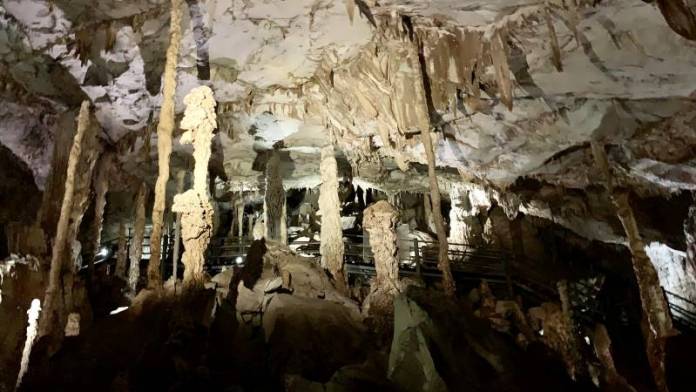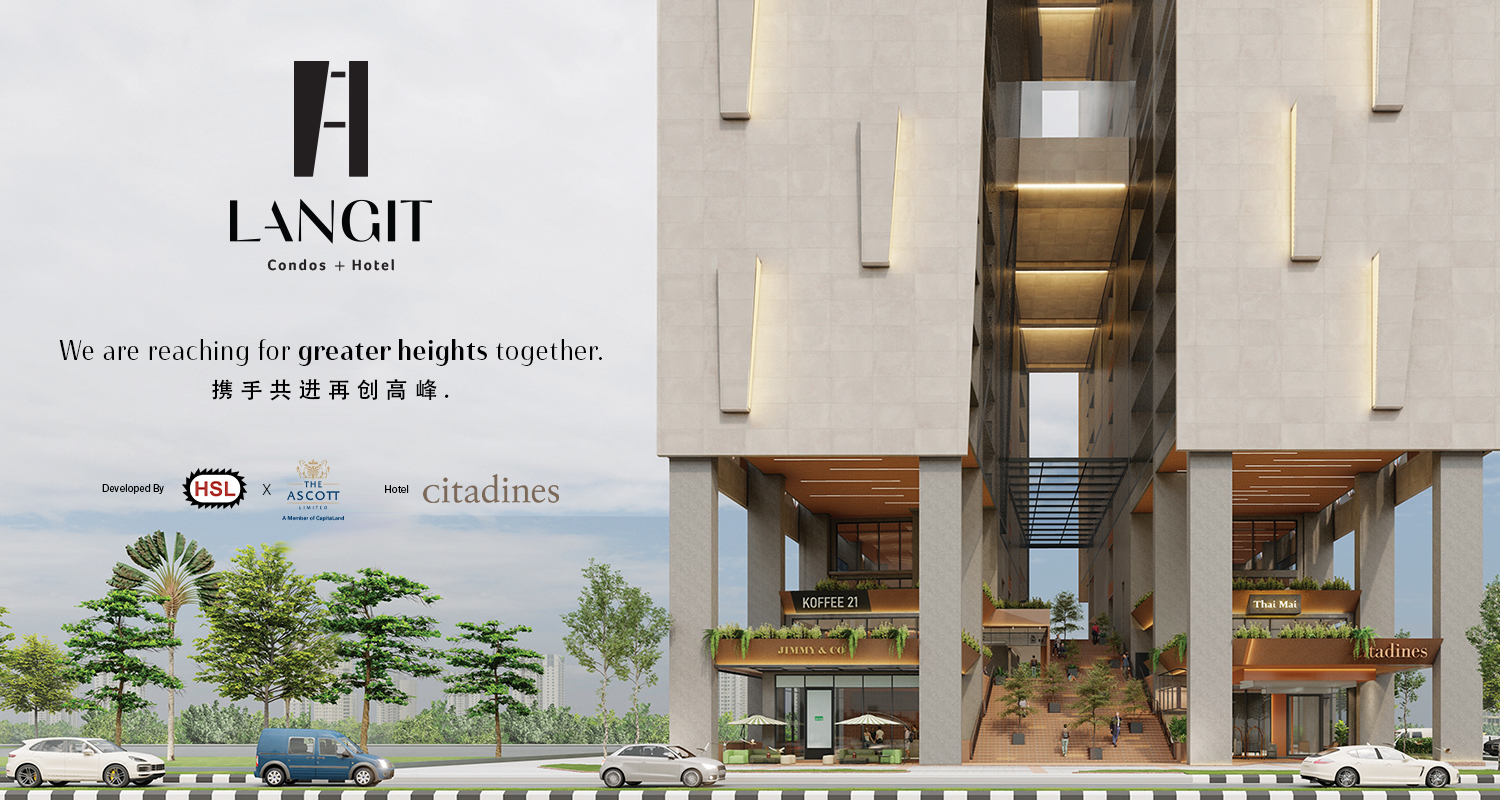
By Nancy Nais
MULU, Dec 31: No two caves are exactly alike, including those in Mulu National Park.
As a matter of fact, the caves in Mulu National Park break all records with three treasures namely Deer Cave, with the biggest known cave entrance in the world; Clearwater Cave, with the world’s longest underground cavity; and Sarawak Chamber being the world’s largest cave.
Home to caves of mind-boggling amazing proportions, as well as a network of caverns and passages, the sights include formations such as stalagmites and stalactites from millions of years in the making.

This place which sits in the 52,860ha land tucked deep in the Borneo rainforest is one of the few and rare parks anywhere in the world that is packed with a brilliant old-growth tropical rainforest that it is truly one of the world’s wonders.
In between are rugged karst mountains, deep gorges with crystal-clear rivers, and a unique mosaic of habitats supporting fascinating and incredibly diverse wildlife.
Among the other remarkable features in the park are Sarawak’s second-highest peak Gunung Mulu (2,376m) and the worldly geological phenomena Pinnacles on Gunung Api (1,710m).
Considering Mulu’s spectacular scenery and biological significance, it was not a surprise to know that Mulu was designated a United Nations Educational, Scientific, and Cultural Organisation (Unesco) World Heritage Site in 2000.
Mind you, to qualify for such status, a park must meet one of the four criteria, and Mulu meets all four.

According to Mulu National Park warden Mark Kuneiglibuan Tisen, the first criteria is the earth’s history and geological features.
Mulu’s concentration of caves and its geomorphic and structural characteristics are an outstanding resource that allows a greater understanding of the earth’s history.
The second criteria are ecological processes where Mulu provides an outstanding scientific opportunity to study theories on the origins of cave faunas, while the third criteria, superlative natural phenomena or natural beauty and aesthetic importance, means that Mulu has outstanding scenic values, including the natural phenomenon of millions of bats and swiftlets leaving and entering the cave.
Biodiversity and threatened species came under the fourth criteria, and Mulu provides a significant natural habitat for a wide range of plant and animal diversity both above and below ground.
Sarawak Tourism Board (STB) recently held a media familiarisation trip to Mulu National Park, in collaboration with MASwings and Mulu Marriott Resort and Spa to promote new norm travel and responsible tourism.

A group of media personnel from Kuching and Miri in Sarawak and Kota Kinabalu in Sabah were flown to Mulu to witness the unimaginable underground wonders.
I flew from Kuching direct to Mulu. The flight was about one hour 45 minutes. As we soared up in the sky into the Mulu area, I remembered the words of a German friend who visited Mulu a few years ago said, “You’ve never seen anything like this before.”
Beautiful winding rivers that have clearly redirected and left behind dry land lakes dominate the landscape.
Even the bumpy ride made me forget that this isn’t the highlight, as a matter of fact, this is going to be quite a way to start.
Uncovering Mulu’s marvel: Deer Cave and Lang Cave
Deer Cave left me lost for words when I encountered it. This has both the world’s biggest cave mouth and the largest cave passage of over 2km long and 220m high.
It is also home to some 12 species of bats including a massive colony of Wrinkled-Lipped Bats, estimated at 3 million.
Enough with the numbers though, here is my not-so-technical evaluation: It was freaking mind-blowing.
A 3km walk through the rainforest took me to these adjacent caverns. Deer Cave is over 2km long and 174m high, while the bats were surely clinging to the roof in a seething black mass as they gear up for their evening prowl.
Since this is a huge cave, the walk inside is much longer and while it is quite an easy stroll, the bat droppings can be a tad overpowering.
Yet, the smell was totally worth it as some of the most iconic features such as Abraham Lincoln’s distinctive profile are found here.

Every day between 5pm and 6.30pm (unless it’s raining), millions of bats will exit the cave in spiralling, twirling clouds that look a bit like swarms of cartoon bees.
It was such an awe-inspiring sight when viewed from the park’s bat observatory outside the cave. Imagine watching 3 million bats flying out for about 30 minutes.
Apparently, the bats’ spiral flight was designed to foil the dinner plans of bat hawks perched on the surrounding cliffs, or so as I was told, and they were heading out to devour some 30 tons of mosquitoes every night.

Some people told me the best time to go is yesterday, but my conclusion says the second-best time is now.
Adjacent to Deer Cave is Lang Cave where it is rather unusual.
Lang Cave’s beauty lies in its stalactites and stalagmites formations which looks like jellyfish. These beautiful formations were strategically lighted for visitors to see and one must not miss them.
Uncovering Mulu’s marvel: Wind Cave and Clearwater Cave
Cruising through the Melinau River on a longboat, this 15-minute journey took us to the entrance of Wind Cave.

Named for the cool breezes blowing through it, Wind Cave is where millions of years of deposits of calcite formed majestic columns in several chambers.
After a short 5-minute walk via a wooden walkway along the outside of the cave next to the river, I witnessed the cathedral-like King’s Chamber, filled with dreamlike forests of stalagmites and stalactites.
This cave just about re-defines the word ‘impressive’ because the stalagmites fuse with the stalactites dropping from the top, connecting so intimately that I cannot tell where it begins and ends.

Some of these columns, up to eight meters high yet some no thicker than a soda can, form a veritable jungle of limestone ‘trees’.
Located just next to Wind Cave is Clearwater Cave, the the longest cave in Southeast Asia.
The Clearwater Cave features a subterranean river and its system is believed to be one of the largest interconnected cave systems in the world by volume.
It is also the 9th longest cave in the world at 236.796 km.
To reach Clearwater Cave’s entrance, there is a sweaty 200-step climb up.
Once inside, I can hear the river roaring beneath my feet as the water travel along its subterranean route for over 200km.
The flowing sound somehow adds a sense of tranquility as I stroll along the wooden plank.
The best view here is towards the end just before exit where the view is enormously impressive and a little bit sinister. I liken it to the Mines of Moria from Lord of the Rings.

Friendly reminder, do not touch all the formations and to be respectful of it as these caves were once used as burial grounds by the natives.
After exiting Clearwater Cave, we rested by the beautiful clear pool at the cave entrance, followed by a picnic lunch under the shade of the rainforest. Such a perfect way to end the day before heading back.
Everything to do in Mulu National Park is worth it, from the easiest to reach Deer and Lang caves, to the‘adventure, intermediate and advance’ such as Lagang Cave, Race Cave, Clearwater Revival, Clearwater Connection, Sarawak Chamber or hiking that are preferred by the adrenaline junkie types like me, to even the free, self-guided walks along the board walk.
Mulu National Park certainly delivers. So, give it a go, make this a hit in your top ten list and let it truly blow your mind. — DayakDaily








